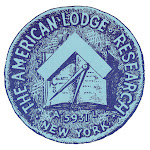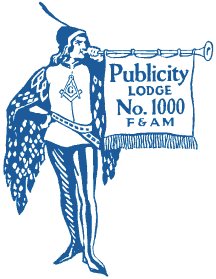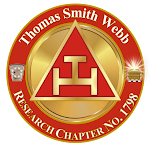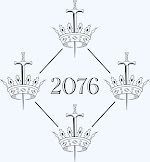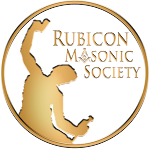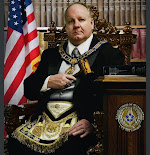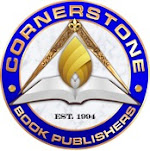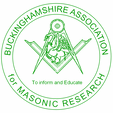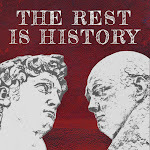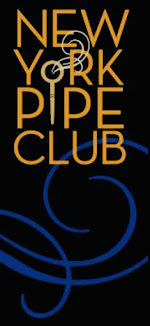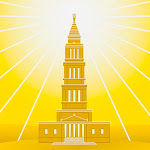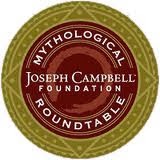 |
| RW Shelby Chandler, Past DDGM of Virginia’s Research District, visited New Jersey Lodge of Masonic Research and Education 1786 on September 13 as keynote speaker on the history of his lodge, Fredericksburg 4. (Low-light photography is dicey.) |
Continuing the what I did on my summer vacation blogging, the weekend after the MLMA meeting (see post below) brought a special couple of days with Shelby Chandler of Virginia. He visited New Jersey Lodge of Masonic Research and Education 1786 to be our keynote speaker on Saturday, September 13, giving a talk on the history of his lodge, Fredericksburg 4—of George Washington, Hugh Mercer, et al. fame. Shelby also is a Past Master of George Washington Lodge of Research 1732 at Fredericksburg, and is a Past DDGM of the Grand Lodge of Virginia’s Research District, now six lodges strong.
Shelby traveled north the day before and was greeted by Worshipful Master Don who, in addition to getting Shelby squared away at the hotel, took him sightseeing to the Washington Crossing Historic Site, Princeton University, and elsewhere. (Note to self: explore feasibility of research lodges having reciprocal visits of speakers.)
About the lodge meeting: the research lodge stands at the forefront of New Jersey Freemasonry’s celebration of our nation’s 250th anniversary. Following our previous meeting’s discussion of John Paul Jones, on this day we learned about Fredericksburg Lodge, as Shelby walked us through its first 150 years. There’s a lot more history and historical giants than George Washington. Both the Revolution and the Civil War factor in that lodge’s story, with many colorful details about its members and its building. Read a little about that here.
Prior to that, Secretary Erich employed his talents as a historian to explain how Freemasons could (and should) make more sense of our history by using the techniques of academic historians, namely dividing the fraternity’s past into manageable epochs, from the mists of time pre-1717 to the “Pop Masonry” period of Dan Brown and National Treasure.
And before that, the Worshipful Master reviewed the book Histoire de la Franc-Maconnerie, which bloomed into an hourlong conversation among the brethren on the vexing vagaries of Freemasonry in France: multiple grand jurisdictions doing things we just find odd.
The following day, Don brought Shelby to the Princeton Battlefield, and we toured this truly hallowed ground. This January 1777 battle was as pivotal to the American Founding as the Declaration itself or the arrival of Rochambeau’s expeditionary army. Read about that here.
Photos of Princeton Battlefield State Park, including Thomas Clarke House:
 |
| Our guides at Princeton Battlefield State Park were terrific. That’s Will Krakower, at left, who led us around the grounds and unpacked the story of the battle. Sorry to say I cannot recall the name of the gentleman on the right. The table in the foreground displays a scale map of the field and the troop movements. |
 |
| Map of the area displayed in Clarke House. |
 |
| This is a descendant of the Hugh Mercer Oak. After being wounded in battle, it is said Gen. Mercer was laid under the tree that stood here to rest while the fighting continued. That tree remained until 2000, when it was felled by a storm, but the tree was genetically reproduced, and that’s what you see today. |
 |
| Shelby at the marker placed near the tree. |
 |
Period pieces neatly displayed
inside Clarke House. |
 |
| Get the Keno Brothers on the phone! |
 |
| Gen. (and Bro.) Mercer died in this room. Not in this particular bed, but in the room. |
 |
| I wonder what tobacco in the eighteenth century tasted like. I know there were makers of smoking tobaccos and snuffs in England (Kendal) around that time that employed techniques appreciated still today, but in the colonies? I assume it was pretty rough and rudimentary, with strong nicotine hits. Drying, aging, curing, etc. Did they know to do these systematically or at all? |










